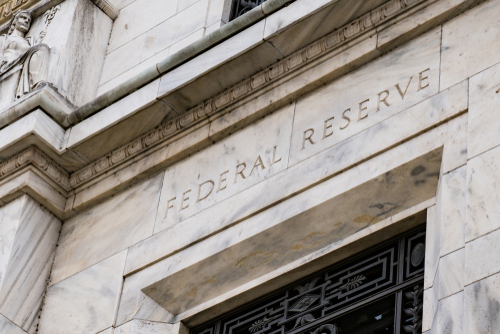How the Federal Reserve’s Decisions Influence Mortgage Rates

The Federal Reserve, often referred to simply as the Fed, wields immense power in shaping the economic landscape of the United States. Among its many responsibilities, one of the most far-reaching is its ability to influence interest rates. In this advanced guide, we will explore the intricate relationship between the Federal Reserve’s decisions and mortgage rates. Understanding this dynamic is essential for investors, homebuyers, and anyone involved in the real estate market.
The Federal Reserve: An Overview
The Federal Reserve is the central bank of the United States, responsible for managing the nation’s monetary policy. Its primary objectives are to maintain price stability, promote full employment, and ensure the stability of the financial system. To achieve these goals, the Fed deploys various tools, one of which is controlling short-term interest rates.
Interest Rates and the Fed
The Federal Reserve influences interest rates through its control of the federal funds rate. The federal funds rate is the interest rate at which banks and credit unions lend reserve balances to other depository institutions overnight. It serves as a benchmark for many other interest rates in the economy.
When the Federal Reserve adjusts the federal funds rate, it sends a signal to financial markets about its stance on monetary policy. The Fed can raise rates to tighten monetary policy, aiming to curb inflation and slow economic growth. Conversely, it can lower rates to stimulate economic activity and combat recession.
The Domino Effect on Mortgage Rates
The decisions made by the Federal Reserve regarding the federal funds rate have a cascading effect on various interest rates, including mortgage rates.
Short-Term vs. Long-Term Rates
While the federal funds rate directly influences short-term interest rates, its impact on long-term rates, such as those for 15- or 30-year mortgages, is indirect. Mortgage rates tend to move in sync with long-term U.S. Treasury bond yields. When the Fed raises the federal funds rate, it can lead to an expectation of higher inflation, prompting investors to demand higher yields on long-term bonds. Consequently, mortgage rates rise to align with these higher yields.
Fixed vs. Adjustable-Rate Mortgages
The Federal Reserve’s rate decisions can also affect the choice between fixed-rate and adjustable-rate mortgages (ARMs). When the Fed lowers interest rates to stimulate economic activity, borrowers may be more inclined to opt for fixed-rate mortgages to lock in low rates for the long term. Conversely, rising rates may make ARMs more attractive to borrowers seeking lower initial monthly payments.
Housing Market Activity
Changes in mortgage rates can significantly impact the housing market. When rates are low, borrowing costs decrease, stimulating demand for homes. This increased demand can lead to rising home prices, benefiting sellers. Conversely, rising rates can cool the housing market, potentially slowing price growth and providing opportunities for buyers.
The Federal Reserve’s Dual Mandate
The Federal Reserve’s actions regarding interest rates are guided by its dual mandate: to promote price stability and maximize employment.
Price Stability
To achieve price stability, the Fed monitors inflation closely. Inflation erodes the purchasing power of the dollar, and the Fed aims to keep it in check. When inflation is too high, the Fed may raise interest rates to curb economic activity and reduce inflationary pressures. This can lead to higher mortgage rates.
Maximizing Employment
The Fed also seeks to maximize employment by fostering conditions that support job growth and economic expansion. When the labor market is strong and unemployment is low, the Fed may keep interest rates low to encourage borrowing and economic activity. This can translate into lower mortgage rates, making homeownership more accessible.
Quantitative Easing (QE) and Mortgage Rates
In addition to controlling the federal funds rate, the Federal Reserve has employed unconventional measures like quantitative easing (QE) to influence mortgage rates directly.
Quantitative easing involves the Fed purchasing long-term securities, including mortgage-backed securities (MBS), to inject liquidity into the financial system and lower long-term interest rates. By doing so, the Fed aims to support the housing market and stimulate economic activity.
The Yield Curve
Another crucial aspect of the Fed’s influence on mortgage rates is the yield curve. The yield curve represents the relationship between interest rates and the maturity of debt for a range of bonds, including U.S. Treasuries. The shape of the yield curve can provide insights into future economic conditions.
Normal Yield Curve: In a healthy economic environment, the yield curve typically slopes upward, with long-term rates higher than short-term rates. This indicates that investors expect economic growth and inflation in the future. Mortgage rates tend to follow the yield curve’s movement. When the Fed raises short-term rates, it can flatten the yield curve, potentially leading to a rise in long-term mortgage rates.
Inverted Yield Curve: An inverted yield curve occurs when short-term rates are higher than long-term rates. This inversion is often seen as a predictor of an economic recession. When the yield curve inverts, mortgage rates may decline as investors seek the safety of long-term bonds, including mortgage-backed securities.
Federal Reserve’s Decisions Influence Mortgage Rates
The Federal Reserve’s decisions hold substantial sway over mortgage rates, influencing borrowing costs for homeowners, real estate investors, and prospective buyers. Understanding the intricate relationship between the Fed’s actions and mortgage rates is essential for navigating the dynamic real estate market. Mortgage rates can impact housing affordability, investment strategies, and the overall health of the housing market. To master the realm of real estate, individuals must remain informed about the Federal Reserve’s monetary policy and its consequences on mortgage rates.





